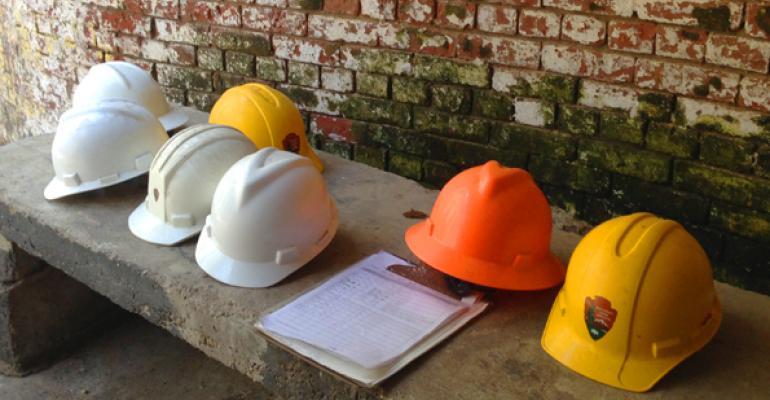Los Angeles is joining the ranks of other major U.S. cities with vertical residential development like New York, Chicago and San Francisco. From downtown Los Angeles (DTLA) to Santa Monica and everything in between, new multifamily and mixed-use projects are going up—literally.
High demand for housing, historically high rents and condo/loft prices are keeping the Los Angeles region’s housing market hot, with both domestic and foreign vertical developers keenly in the game. But scarcity of land in popular urban neighborhoods is driving residential development vertical so projects are financially viable.
A total of 67 residential projects with 22,435 units are under construction or planned in DTLA. The majority of projects are at least seven stories, but 21 projects are 10 stories or more, according to the DTLA Business Improvement District’s QTR-2 2015 Market Report. Beverly Hills, Century City, the Mid-Cities district and Woodland Hills are also seeing vertical development.
The tallest residential project underway in DTLA is the 50-story project at 820 S. Olive Street by Vancouver, Canada-based developer Onni Group, notes a mid-year 2015 report on downtown projects published by the LA Downtown News. But Chinese developer Greenland USA’s $1 billion mixed-use project in the South Park district—Metropolis—includes a 54-story condominium tower, as well as 38- and 40-story towers.
Other high-rise residential projects with 40 stories or more include:
Beijing-based developer Oceanwide’s $1 billion Fig Central, another mega mixed-use project with residential and hotel components in South Park, which has a 49-story residential tower and two 40-story towers;
Chinese developer Shenzhen Hazens’ $700 million hotel-condo project in South Park, which has three towers, one of which is 42 stories;
Another project by Onni Group at 1200 S. Flower Street is a 40-story tower at 1200 S. Flower Street;
Spring Street Apartments by Australian developer Joseph Hellen, a 40-story residential tower at 525 S. Spring Street.
Beverly Hills, Century City and nearby Mid-Cities markets also have a number of high-rise projects underway or planned. Some examples are:
A super-lux, 19-story residential project by local developer Rick Caruso adjacent to the Beverly Center at the gateway to Beverly Hills;
UDR’s 18 story high- rise in the Mid-City, Koreatown section;
Two luxury condo projects in Beverly Hills by Chinese developer Wanda Group, valued at $1.2 billion and $1.7 billion;
A $300 million, 39-story residential development in Century City by Miami developer Crescent Heights.
High-rise residential development is also spreading to the San Fernando Valley area. Boston Global Investors is planning to reposition the 46-acre former Rocketdyne site located in the 924-acre Warner Center section of Woodland Hills into a $3 billion, eco-friendly, transit-oriented, high-rise community with a mix of uses, according to Boston Global. Nearly four million sq. ft. of the 5 million-sq.-ft. development is committed to residential development.
With investor capital pouring into the region’s real estate market, market rate and for sale multifamily housing development is expected to continue for the foreseeable future. The Los Angeles region is producing about 20,000 units of market rate units annually, but a recent report on housing affordability from the California Legislative Analyst’s Office estimates that 55,000 units are needed annually to keep housing affordability in check.
A major threat to the current residential development boom and housing affordability, however, is the rising cost of land. According to Integra Realty Resources, a Los Angeles real estate valuation and consulting firm, the cost of land in popular residential markets is now $400 to $600 per sq. ft.
In addition to the rising cost of land, construction costs, which have risen modestly in the past five years, are now increasing at a greater rate due to the high demand for construction providers.
In Los Angeles’ high-barrier-to-entry submarkets, sites zoned or already approved for high-rise residential development are bringing the top-most prices. Greenland, for example, paid $150 million for Metropolis’ 6.3-acre site, which is approved for 1.6 million sq. ft. of residential, hotel and retail space. Hazens’ paid $105 million for the site of their new luxury hotel and condo project. Both sites are in South Park near L.A. Live.
Wanda Group paid in the $400 million range for the eight-parcel site in Beverly Hills where the company plans to build the $1.7 billion condo project, according to a report in the Los Angeles Times. The company also paid about $1.7 million per unit for land where the 235-unit, ultra-luxury condo project is rising—a far cry above the $878,000 per unit that New York developer Related Cos. paid in 2005 for the site of The Century, a luxury condo tower in Century City.
The Los Angeles Times article also reported that potential buyers from 21 countries are expected to bid on a prime 5.5-acre vacant lot already approved for two 47-story towers with 453 residential units. Formerly part of 20th Century Fox's studio back lot, the site at 1950 Avenue of the Stars in Century City is now located amid several of Los Angeles’ newest office towers.
Steve Pellegren is executive vice president at Bernards, a Los Angeles-based building and construction management firm.

